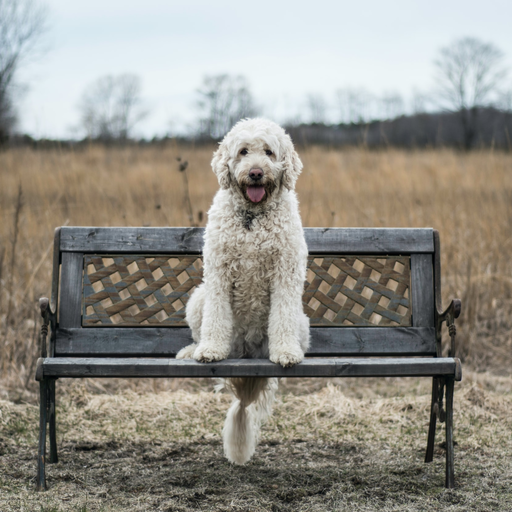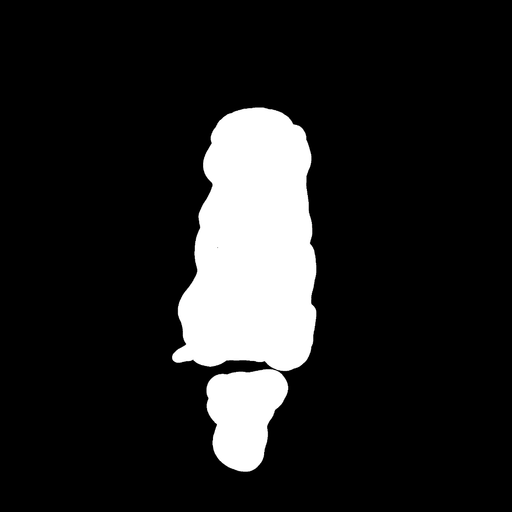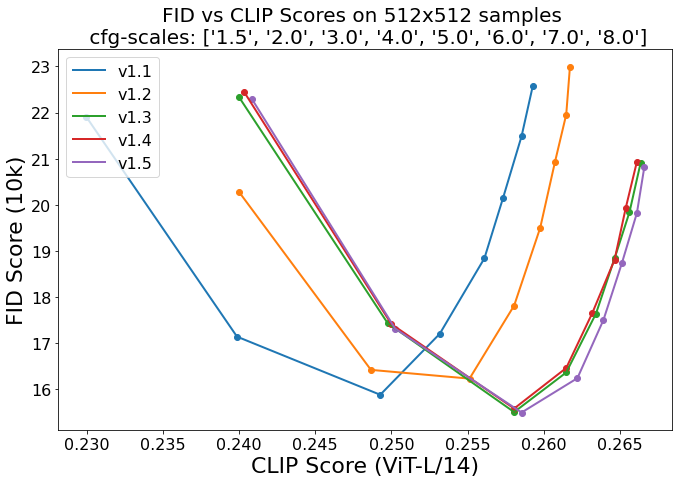license: creativeml-openrail-m
tags:
- stable-diffusion
- stable-diffusion-diffusers
- text-to-image
inference: false
library_name: diffusers
extra_gated_prompt: >-
One more step before getting this model.
This model is open access and available to all, with a CreativeML OpenRAIL-M
license further specifying rights and usage.
The CreativeML OpenRAIL License specifies:
1. You can't use the model to deliberately produce nor share illegal or
harmful outputs or content
2. CompVis claims no rights on the outputs you generate, you are free to use
them and are accountable for their use which must not go against the
provisions set in the license
3. You may re-distribute the weights and use the model commercially and/or as
a service. If you do, please be aware you have to include the same use
restrictions as the ones in the license and share a copy of the CreativeML
OpenRAIL-M to all your users (please read the license entirely and carefully)
Please read the full license here:
https://huggingface.co/spaces/CompVis/stable-diffusion-license
By clicking on "Access repository" below, you accept that your *contact
information* (email address and username) can be shared with the model authors
as well.
extra_gated_fields:
I have read the License and agree with its terms: checkbox
Re-upload
This repository is being re-uploaded to HuggingFace in accordance with The CreativeML OpenRAIL-M License under which this repository was originally uploaded, specifically Section II which grants:
...a perpetual, worldwide, non-exclusive, no-charge, royalty-free, irrevocable copyright license to reproduce, prepare, publicly display, publicly perform, sublicense, and distribute the Complementary Material, the Model, and Derivatives of the Model.
Note that these files did not come from HuggingFace, but instead from modelscope. As such, there may be modifications to the weights that are unknown. If you have copies of the original weights and would be willing to perform a checksum for me to be sure, I'd be grateful - Make a post in the Community tab if you can.
Original Model Card
Stable Diffusion Inpainting is a latent text-to-image diffusion model capable of generating photo-realistic images given any text input, with the extra capability of inpainting the pictures by using a mask.
The Stable-Diffusion-Inpainting was initialized with the weights of the Stable-Diffusion-v-1-2. First 595k steps regular training, then 440k steps of inpainting training at resolution 512x512 on “laion-aesthetics v2 5+” and 10% dropping of the text-conditioning to improve classifier-free classifier-free guidance sampling. For inpainting, the UNet has 5 additional input channels (4 for the encoded masked-image and 1 for the mask itself) whose weights were zero-initialized after restoring the non-inpainting checkpoint. During training, we generate synthetic masks and in 25% mask everything.
Examples:
You can use this with the 🧨Diffusers library.
Diffusers
from diffusers import StableDiffusionInpaintPipeline
pipe = StableDiffusionInpaintPipeline.from_pretrained(
"benjamin-paine/stable-diffusion-v1-5-inpainting",
variant="fp16",
torch_dtype=torch.float16,
)
prompt = "Face of a yellow cat, high resolution, sitting on a park bench"
#image and mask_image should be PIL images.
#The mask structure is white for inpainting and black for keeping as is
image = pipe(prompt=prompt, image=image, mask_image=mask_image).images[0]
image.save("./yellow_cat_on_park_bench.png")
How it works:
image |
mask_image |
|---|---|
 |
 |
prompt |
Output |
|---|---|
| Face of a yellow cat, high resolution, sitting on a park bench |  |
Model Details
Developed by: Robin Rombach, Patrick Esser
Model type: Diffusion-based text-to-image generation model
Language(s): English
License: The CreativeML OpenRAIL M license is an Open RAIL M license, adapted from the work that BigScience and the RAIL Initiative are jointly carrying in the area of responsible AI licensing. See also the article about the BLOOM Open RAIL license on which our license is based.
Model Description: This is a model that can be used to generate and modify images based on text prompts. It is a Latent Diffusion Model that uses a fixed, pretrained text encoder (CLIP ViT-L/14) as suggested in the Imagen paper.
Resources for more information: Paper.
Cite as:
@InProceedings{Rombach_2022_CVPR, author = {Rombach, Robin and Blattmann, Andreas and Lorenz, Dominik and Esser, Patrick and Ommer, Bj\"orn}, title = {High-Resolution Image Synthesis With Latent Diffusion Models}, booktitle = {Proceedings of the IEEE/CVF Conference on Computer Vision and Pattern Recognition (CVPR)}, month = {June}, year = {2022}, pages = {10684-10695} }
Uses
Direct Use
The model is intended for research purposes only. Possible research areas and tasks include
- Safe deployment of models which have the potential to generate harmful content.
- Probing and understanding the limitations and biases of generative models.
- Generation of artworks and use in design and other artistic processes.
- Applications in educational or creative tools.
- Research on generative models.
Excluded uses are described below.
Misuse, Malicious Use, and Out-of-Scope Use
Note: This section is taken from the DALLE-MINI model card, but applies in the same way to Stable Diffusion v1.
The model should not be used to intentionally create or disseminate images that create hostile or alienating environments for people. This includes generating images that people would foreseeably find disturbing, distressing, or offensive; or content that propagates historical or current stereotypes.
Out-of-Scope Use
The model was not trained to be factual or true representations of people or events, and therefore using the model to generate such content is out-of-scope for the abilities of this model.
Misuse and Malicious Use
Using the model to generate content that is cruel to individuals is a misuse of this model. This includes, but is not limited to:
- Generating demeaning, dehumanizing, or otherwise harmful representations of people or their environments, cultures, religions, etc.
- Intentionally promoting or propagating discriminatory content or harmful stereotypes.
- Impersonating individuals without their consent.
- Sexual content without consent of the people who might see it.
- Mis- and disinformation
- Representations of egregious violence and gore
- Sharing of copyrighted or licensed material in violation of its terms of use.
- Sharing content that is an alteration of copyrighted or licensed material in violation of its terms of use.
Limitations and Bias
Limitations
- The model does not achieve perfect photorealism
- The model cannot render legible text
- The model does not perform well on more difficult tasks which involve compositionality, such as rendering an image corresponding to “A red cube on top of a blue sphere”
- Faces and people in general may not be generated properly.
- The model was trained mainly with English captions and will not work as well in other languages.
- The autoencoding part of the model is lossy
- The model was trained on a large-scale dataset LAION-5B which contains adult material and is not fit for product use without additional safety mechanisms and considerations.
- No additional measures were used to deduplicate the dataset. As a result, we observe some degree of memorization for images that are duplicated in the training data. The training data can be searched at https://rom1504.github.io/clip-retrieval/ to possibly assist in the detection of memorized images.
Bias
While the capabilities of image generation models are impressive, they can also reinforce or exacerbate social biases. Stable Diffusion v1 was trained on subsets of LAION-2B(en), which consists of images that are primarily limited to English descriptions. Texts and images from communities and cultures that use other languages are likely to be insufficiently accounted for. This affects the overall output of the model, as white and western cultures are often set as the default. Further, the ability of the model to generate content with non-English prompts is significantly worse than with English-language prompts.
Training
Training Data The model developers used the following dataset for training the model:
- LAION-2B (en) and subsets thereof (see next section)
Training Procedure Stable Diffusion v1 is a latent diffusion model which combines an autoencoder with a diffusion model that is trained in the latent space of the autoencoder. During training,
- Images are encoded through an encoder, which turns images into latent representations. The autoencoder uses a relative downsampling factor of 8 and maps images of shape H x W x 3 to latents of shape H/f x W/f x 4
- Text prompts are encoded through a ViT-L/14 text-encoder.
- The non-pooled output of the text encoder is fed into the UNet backbone of the latent diffusion model via cross-attention.
- The loss is a reconstruction objective between the noise that was added to the latent and the prediction made by the UNet.
We currently provide six checkpoints, sd-v1-1.ckpt, sd-v1-2.ckpt and sd-v1-3.ckpt, sd-v1-4.ckpt, sd-v1-5.ckpt and sd-v1-5-inpainting.ckpt
which were trained as follows,
sd-v1-1.ckpt: 237k steps at resolution256x256on laion2B-en. 194k steps at resolution512x512on laion-high-resolution (170M examples from LAION-5B with resolution>= 1024x1024).sd-v1-2.ckpt: Resumed fromsd-v1-1.ckpt. 515k steps at resolution512x512on "laion-improved-aesthetics" (a subset of laion2B-en, filtered to images with an original size>= 512x512, estimated aesthetics score> 5.0, and an estimated watermark probability< 0.5. The watermark estimate is from the LAION-5B metadata, the aesthetics score is estimated using an improved aesthetics estimator).sd-v1-3.ckpt: Resumed fromsd-v1-2.ckpt. 195k steps at resolution512x512on "laion-improved-aesthetics" and 10% dropping of the text-conditioning to improve classifier-free guidance sampling.sd-v1-4.ckpt: Resumed from stable-diffusion-v1-2.225,000 steps at resolution 512x512 on "laion-aesthetics v2 5+" and 10 % dropping of the text-conditioning to classifier-free guidance sampling.sd-v1-5.ckpt: Resumed from sd-v1-2.ckpt. 595k steps at resolution 512x512 on "laion-aesthetics v2 5+" and 10% dropping of the text-conditioning to improve classifier-free guidance sampling.sd-v1-5-inpaint.ckpt: Resumed from sd-v1-2.ckpt. 595k steps at resolution 512x512 on "laion-aesthetics v2 5+" and 10% dropping of the text-conditioning to improve classifier-free guidance sampling. Then 440k steps of inpainting training at resolution 512x512 on “laion-aesthetics v2 5+” and 10% dropping of the text-conditioning. For inpainting, the UNet has 5 additional input channels (4 for the encoded masked-image and 1 for the mask itself) whose weights were zero-initialized after restoring the non-inpainting checkpoint. During training, we generate synthetic masks and in 25% mask everything.Hardware: 32 x 8 x A100 GPUs
Optimizer: AdamW
Gradient Accumulations: 2
Batch: 32 x 8 x 2 x 4 = 2048
Learning rate: warmup to 0.0001 for 10,000 steps and then kept constant
Evaluation Results
Evaluations with different classifier-free guidance scales (1.5, 2.0, 3.0, 4.0, 5.0, 6.0, 7.0, 8.0) and 50 PLMS sampling steps show the relative improvements of the checkpoints:
Evaluated using 50 PLMS steps and 10000 random prompts from the COCO2017 validation set, evaluated at 512x512 resolution. Not optimized for FID scores.
Inpainting Evaluation
To assess the performance of the inpainting model, we used the same evaluation
protocol as in our LDM paper. Since the
Stable Diffusion Inpainting Model acccepts a text input, we simply used a fixed
prompt of photograph of a beautiful empty scene, highest quality settings.
| Model | FID | LPIPS |
|---|---|---|
| Stable Diffusion Inpainting | 1.00 | 0.141 (+- 0.082) |
| Latent Diffusion Inpainting | 1.50 | 0.137 (+- 0.080) |
| CoModGAN | 1.82 | 0.15 |
| LaMa | 2.21 | 0.134 (+- 0.080) |
Environmental Impact
Stable Diffusion v1 Estimated Emissions Based on that information, we estimate the following CO2 emissions using the Machine Learning Impact calculator presented in Lacoste et al. (2019). The hardware, runtime, cloud provider, and compute region were utilized to estimate the carbon impact.
- Hardware Type: A100 PCIe 40GB
- Hours used: 150000
- Cloud Provider: AWS
- Compute Region: US-east
- Carbon Emitted (Power consumption x Time x Carbon produced based on location of power grid): 11250 kg CO2 eq.
Citation
@InProceedings{Rombach_2022_CVPR,
author = {Rombach, Robin and Blattmann, Andreas and Lorenz, Dominik and Esser, Patrick and Ommer, Bj\"orn},
title = {High-Resolution Image Synthesis With Latent Diffusion Models},
booktitle = {Proceedings of the IEEE/CVF Conference on Computer Vision and Pattern Recognition (CVPR)},
month = {June},
year = {2022},
pages = {10684-10695}
}
This model card was written by: Robin Rombach and Patrick Esser and is based on the DALL-E Mini model card.
